How To Save a Dying Cactus: 10 Tips & Tricks
-

- Last updated:
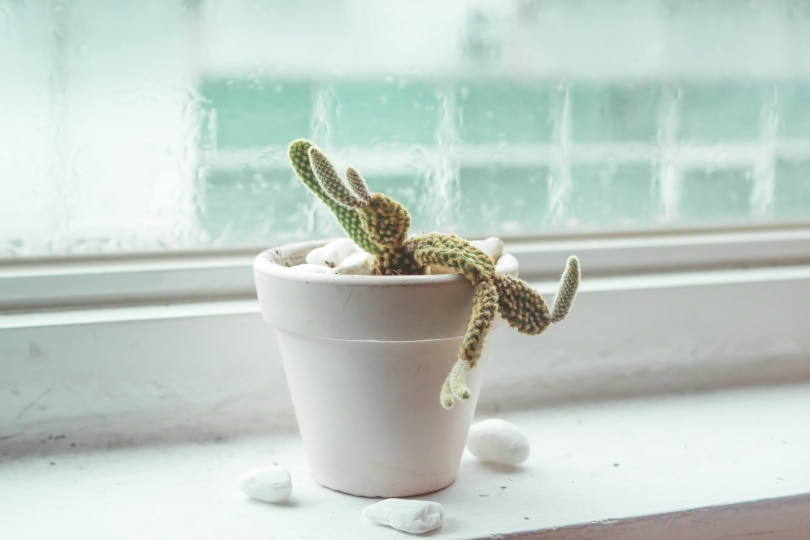
A cactus makes a great choice for a house plant because of its durability and resilience. Cacti also look great hugged by an ornamental pot or in a garden bed anchored amongst rocks and other members of the succulent family.
If you have noticed that your happy cactus has taken a turn, there could be a few factors causing it to appear dull, dry, and unhappy overall. So, how do you save a dying cactus? First, you will need to make a diagnosis, and after that, you can follow these tips and tricks we have compiled to provide it with the necessary care.
How To Tell if Your Cactus Is Dying
Cacti are slow growing which sometimes makes it difficult to tell if they’re on their way out or not. While slow growth is not a cause for concern, there are other physical changes to be aware of.
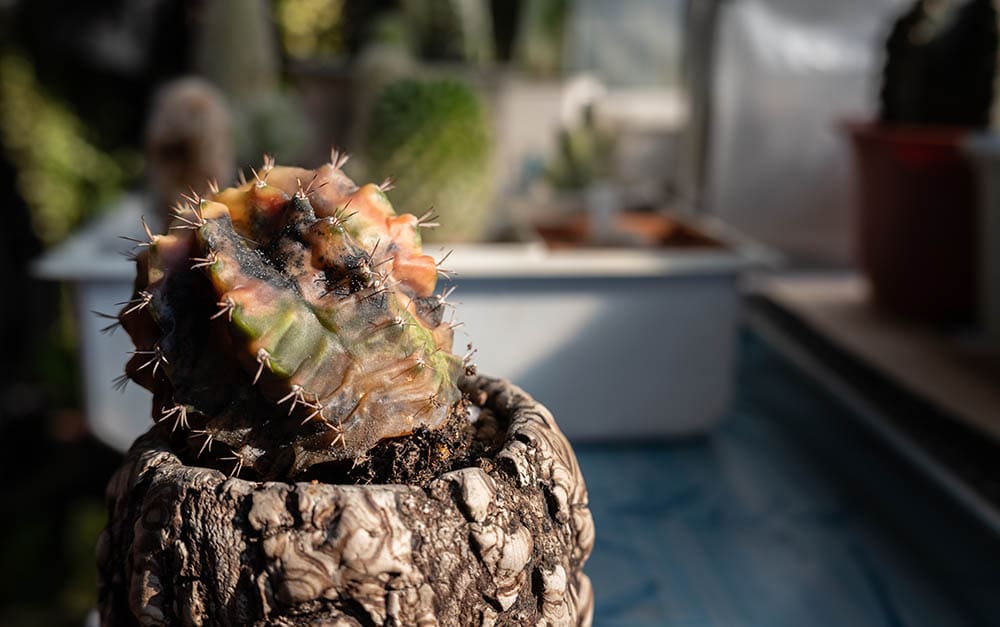
- The skin should look firm and plump, so if your cactus looks dry, it could indicate it is on its way out.
- If your cactus is loose in its soil, it could indicate root rot caused by overwatering or underwatering.
- It can also become soft and spongy and begin to smell bad, indicating possible stem rot. The rot starts anywhere on the plant and spread.
- Your cacti will sometimes lose their spikes and turn brown or discolored. This can also be a result of root rot, and you will notice the discoloration around the spikes before they fall off. Sadly, a yellowing cactus or a cactus with spots of discoloring could mean that it is close to death. While some browning is normal, you will need to monitor it closely to establish if it is dying or not.
- White spots on your cactus could indicate that pests or fungi have moved in. While most pests are not usually fatal to your cactus, when combined with rot, they can reduce a cactus’s ability to revive itself and may cause it to die.
Fortunately, while some plants may be difficult to revive with proper care, the majority can be brought back to life with a little extra attention.
The 10 Tips & Tricks To Save a Dying Cactus
1. Monitor Your Watering
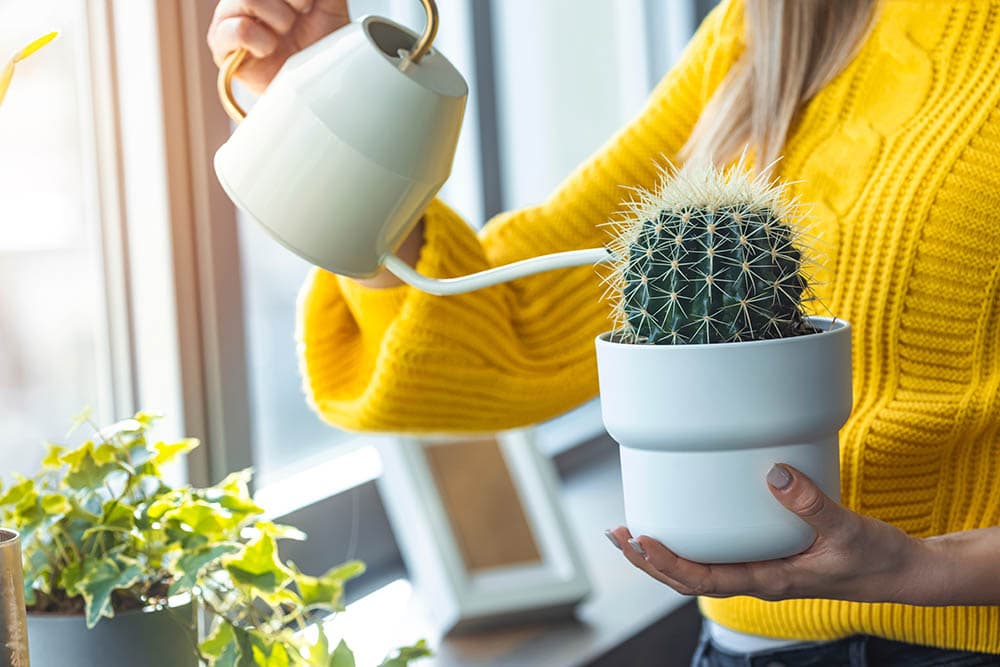
When it comes to many types of cacti, too much water can be just as damaging as not enough. Cacti are desert plants, so you should use less rather than more water. Press your finger into the top inch of soil to check the moisture level. If the soil is completely dry and your cactus appears drooping or shriveled, it is most likely thirsty and needs more water. Continue to water it regularly, and your cactus should begin to revive again.
If your cactus looks spongy or mushy, it could be due to too overwatering. Most of the time, it is because of insufficient drainage that your cactus is battling. Start by watering your cactus with less water. If the pot is not the right size, it may be holding too much water as well, so if you suspect this is a problem, try repotting your cactus into an appropriate-sized pot that is bigger than the cactus itself.
Water it once a month on average from March to September. Water only once a month or less during the dormant season, which lasts from October to February.
2. Cut Away Any Rotting Areas
Rotting typically occurs due to overwatering. Sometimes discoloring can also be caused by a fungus. If your cactus is starting to discolor or become mushy, you should cut those parts away. If your plant’s soil is too soaked, consider repotting it and starting your watering routine again. A typical soil mixture for desert cacti consists of two parts garden soil, two parts coarse sand, and one part peat.
3. Adjust Daily Sunlight
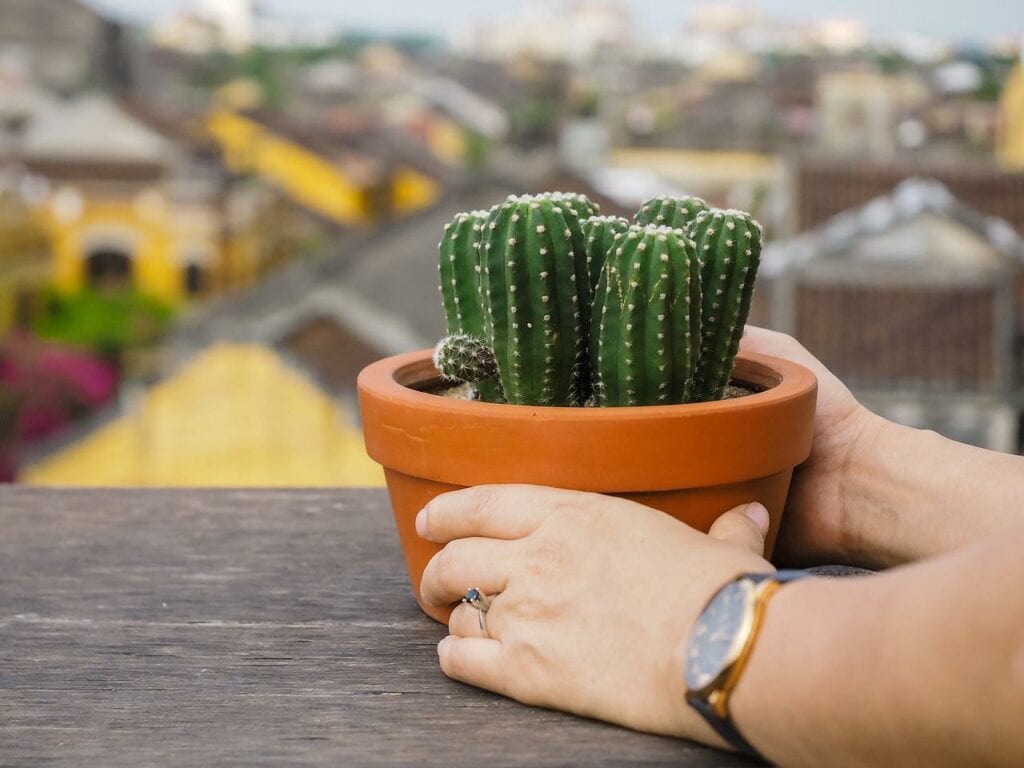
Make sure your cactus is receiving the right amount of sunlight. Just like watering, it can get too much or too little sunlight. If your cactus starts getting narrow, it could indicate that it is searching for more sunlight. Move your plant to an area that gets more sun in the day or an area that gets sunlight for a longer period of the day.
If your cactus is yellowing, it could be a sign of too much sunlight. Move your plant to an area that receives a bit of shade and gets more gentle sunlight. If the yellowing doesn’t go away, cut those areas of your cactus off.]
4. Give Your Cacti a Rinse if They Are Dirty or Dusty
When your cacti are dusty or covered with dirt, they cannot photosynthesize efficiently. A cloth or a soft sponge is useful to remove the dirt build-up, or you can give it a gentle rinse under the tap.
5. Control insects
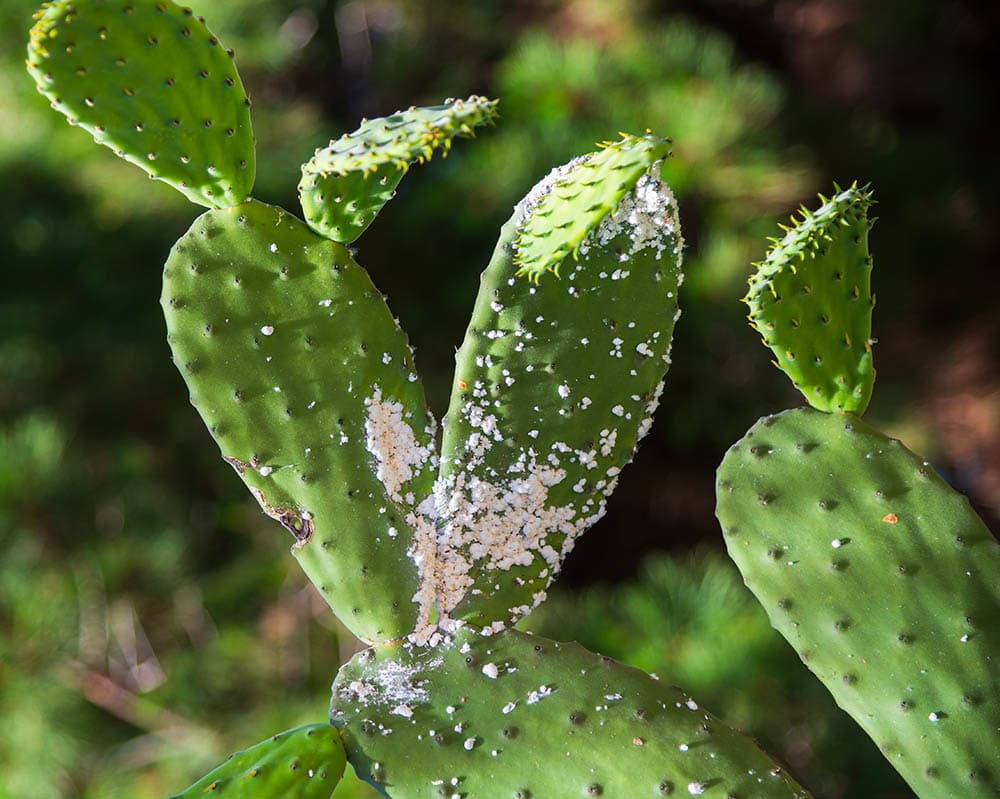
Spider mites and mealybugs are two common culprits that cause yellowing in your cactus. Mealybugs are tiny, powdery white insects that live in clusters. Spider mites are red and small, and they spin webs between the spines of the cactus. You can use alcohol and a cotton swab and apply it to the infested areas to get rid of them.
6. Use an Appropriate Soil Mixture and Low Nitrogen Fertilizer
A typical soil mixture for desert cacti consists of two parts garden soil, two parts coarse sand, and one part peat. The best fertilizer ratio for cacti is one with a nitrogen level of 10. Too much nitrogen will stunt its growth and cause its texture to be spongy. Never fertilize a cactus from October to February when it is dormant. A clay pot is ideal since it allows the soil to breathe, and because they are heavy, they will not fall over.
7. Monitor Room Temperature
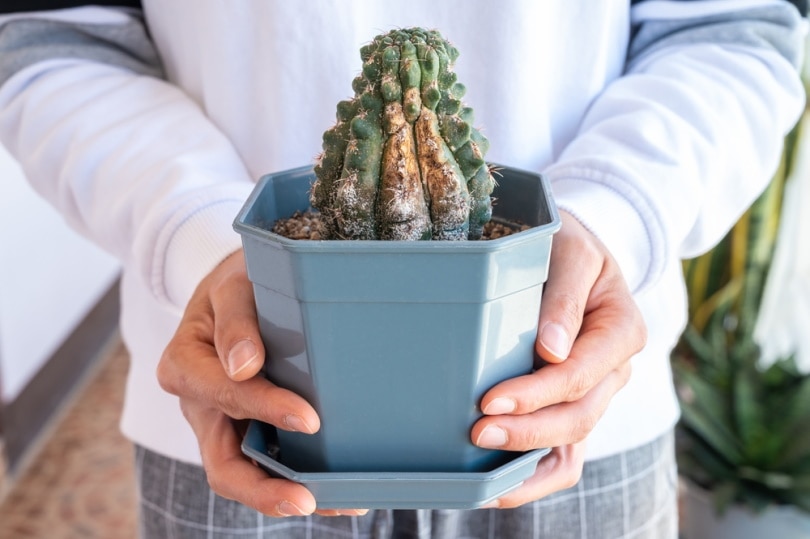
During winter, when cacti are dormant, they prefer cooler temperatures. During the night, an ideal temperature is 45–60 degrees Fahrenheit, and a room that has less heat is the most suitable. Keep them out of drafts by positioning them away from open windows and off the floor near doors. If your cacti live outside, provide them with frost cloth or move them into a more sheltered area as cacti don’t usually tolerate frost.
8. Change Pots as Your Cactus Grows
When your cactus becomes too top-heavy for the pot to support it, or when it grows within an inch of the pot’s edge, you will know it’s time for a larger container. Replant your cactus at the same depth as the original pot.
9. Identify and Remove Root Rot
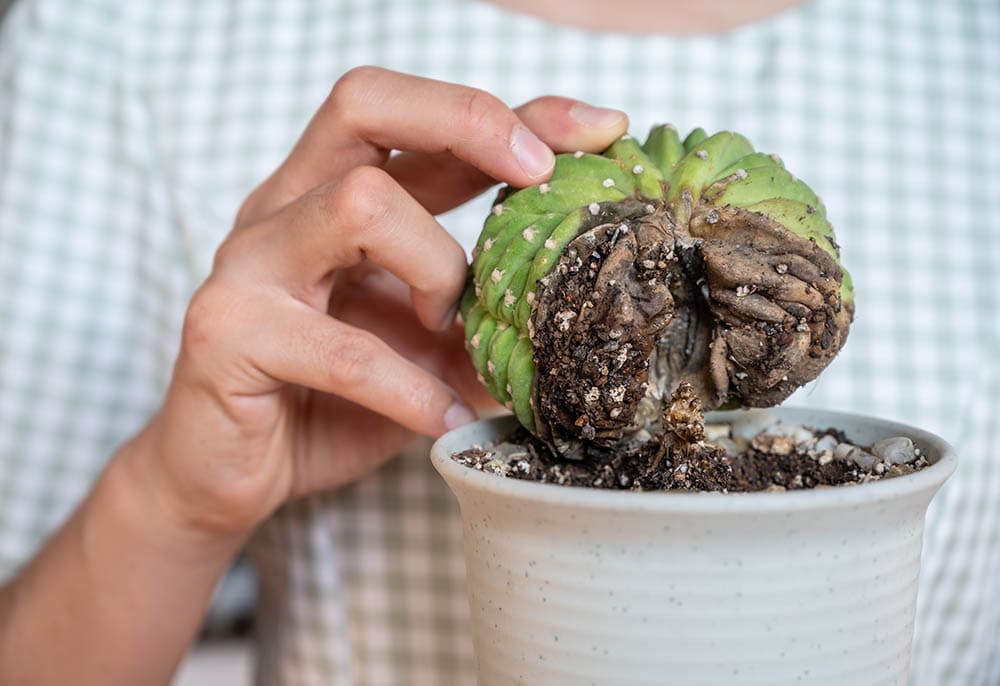
A cactus’s roots do not require much water and will rot if they have too much. Root rot usually occurs when the roots have been sitting in moist soil for too long. You will need to act quickly when you notice that your cactus is suffering from root rot. Gently remove your cactus from the pot and brush away any soil left on its roots. Inspect the roots and cut off any black and soft pieces that appear dead. Allow the cactus to sit out of its soil for about 10 days. This will allow calluses to form around the damaged or cut areas. Place it on a piece of paper, away from the sun but not too far away from cool temperatures. If your cacti are outside, ensure the soil they are planted in has good drainage.
10. Leave Your Cactus Alone
Although this seems counter-intuitive, sometimes it is the most effective. There are times when your plant appears weak or off to you, but it could simply be going through its normal die-off and bud-shredding phase.
Conclusion
Once you successfully diagnose your cacti’s health, establish a good routine to keep it healthy. Critical steps in keeping your cactus thriving are to not under or over water, provide adequate sunlight, and allow time to heal and revive. Continue to monitor your cacti for tell-tale signs that they’re struggling, and act fast to prevent them from dying.
- https://cactusway.com/how-do-you-revive-a-dying-cactus-10-easy-steps/
- https://phoenixtrimatree.com/save-a-dying-cactus-how-to-revive-your-plant/
- https://www.wikihow.com/Save-a-Dying-Cactus
- https://plantophiles.com/plant-care/how-to-tell-if-a-cactus-is-dead/#:~:text=A%20cactus%20is%20dead%20when,spikes%20and%20are%20often%20brown.
Featured Image Credit: Piqsels
Contents


